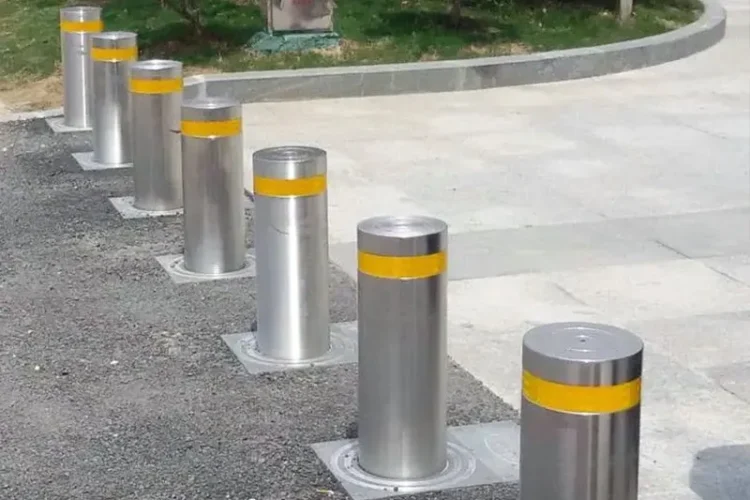In the bustling streets of modern cities, amidst the towering skyscrapers and buzzing traffic, lie the unsung heroes of urban safety: bollards. Often overlooked, these simple structures are crucial in protecting our cities from various threats, ranging from vehicle attacks to traffic management. In this blog post, we will delve into the world of bollards, exploring their importance, functionality, and the diverse ways they contribute to urban environment safety and security.
The Evolution of Bollards
Bollards have a long history dating back centuries. They originated as sturdy posts for mooring ships. Over time, their purpose evolved, and they found their way into urban landscapes as protective barriers. From their humble beginnings as wooden posts to modern iterations made of steel and concrete, urban safety measures have undergone significant transformations to meet changing needs.
Protecting Pedestrian Zones
One primary function in safeguarding pedestrian zones from vehicular intrusion is using barriers. Bollards are strategically placed at entry points and along sidewalks to create a physical barrier that stops automobiles from accessing designated pedestrian areas, protecting safety from potential accidents or deliberate attacks.
Enhancing Public Space Design
Beyond their practical purpose, these structures contribute to public spaces’ aesthetic appeal and functionality. Bollards can be designed in various shapes, sizes, and materials to complement urban architecture and landscape design, effortlessly merging into the surrounding environment while fulfilling a protective role. Whether ornamental structures adorn city squares or retractable barriers control access to pedestrian plazas, these features enhance the overall ambience of urban areas.
Mitigating Security Risks
In an age of heightened security concerns, bollards have emerged as indispensable tools for mitigating security risks in public spaces. From safeguarding critical infrastructure like government buildings and monuments to ensuring the security of crowded event venues and tourist attractions, these structures defend against potential threats, including vehicle-borne attacks and unauthorised access.
Sustainable Solutions
There has been a growing emphasis on sustainability in urban planning and infrastructure development in recent years. Bollards offer an opportunity to integrate sustainable solutions into city design. Many modern urban fixtures are crafted from recycled materials or designed with eco-friendly features, aligning with the broader goal of creating more environmentally conscious urban environments. Additionally, these fixtures can support initiatives such as pedestrianisation and alternative transportation by facilitating the creation of car-free zones and promoting walking and cycling.
Flexible Functionality
While bollards are primarily known for providing physical security, their functionality extends beyond mere barriers. Innovative designs enable versatile solutions, integrating lighting elements for enhanced visibility at night and incorporating technology for traffic management and data collection. By embracing these multifunctional features, cities can optimise urban infrastructure to meet evolving needs, ensuring practical tools for enhancing safety and functionality are readily available.
Community Engagement and Design Integration
Effective urban design goes beyond functionality and aesthetics and involves community engagement and inclusivity. In the context of bollards, engaging local communities in the design and placement process can foster a sense of ownership and pride in public spaces. Moreover, integrating protective barriers into broader placemaking initiatives allows cities to create environments that reflect their inhabitants’ unique identities and values. By embracing a collaborative approach to bollard design and deployment, cities can foster social cohesion, promote inclusivity, and enhance the overall quality of urban life.
Global Adoption and Adaptation
The importance of bollards transcends geographical boundaries, with cities worldwide recognising their efficacy in enhancing safety and urban design. From bustling metropolises to quaint town squares, urban settings utilise diverse elements for safety and functionality, adapting to local contexts and challenges. While the fundamental purpose of ensuring protection and security remains consistent, different regions may prioritise specific features or design elements based on their unique needs and cultural preferences. By sharing best practices and lessons learned, cities can foster a global community of practice centred around bollard implementation, driving continuous innovation and improvement in urban safety and infrastructure.
Resilience in the Face of Adversity
In times of crisis and uncertainty, the resilience of urban infrastructure becomes paramount. With their ability to withstand impact and provide physical protection, bollards play a crucial role in fortifying cities against various threats, including terrorism, natural disasters, and civil unrest. Whether deployed in high-security zones or integrated into everyday urban spaces, these structures are tangible symbols of resilience, reminding inhabitants of their city’s capacity to adapt, endure, and thrive in adversity. By investing in robust bollard infrastructure and comprehensive security measures, cities can bolster their resilience and instil confidence in residents, visitors, and investors.
Conclusion
Bollards may appear unassuming amidst the urban landscape, but their significance must be balanced. These simple structures serve as silent guardians, protecting cities and their inhabitants from harm while seamlessly blending into their surroundings. From delineating pedestrian zones to enhancing public space design and mitigating security risks, various elements play a multifaceted role in ensuring the safety and security of urban environments. As cities continue to evolve and face new challenges, the humble bollard will remain a steadfast ally in safeguarding the vitality and resilience of urban communities.




